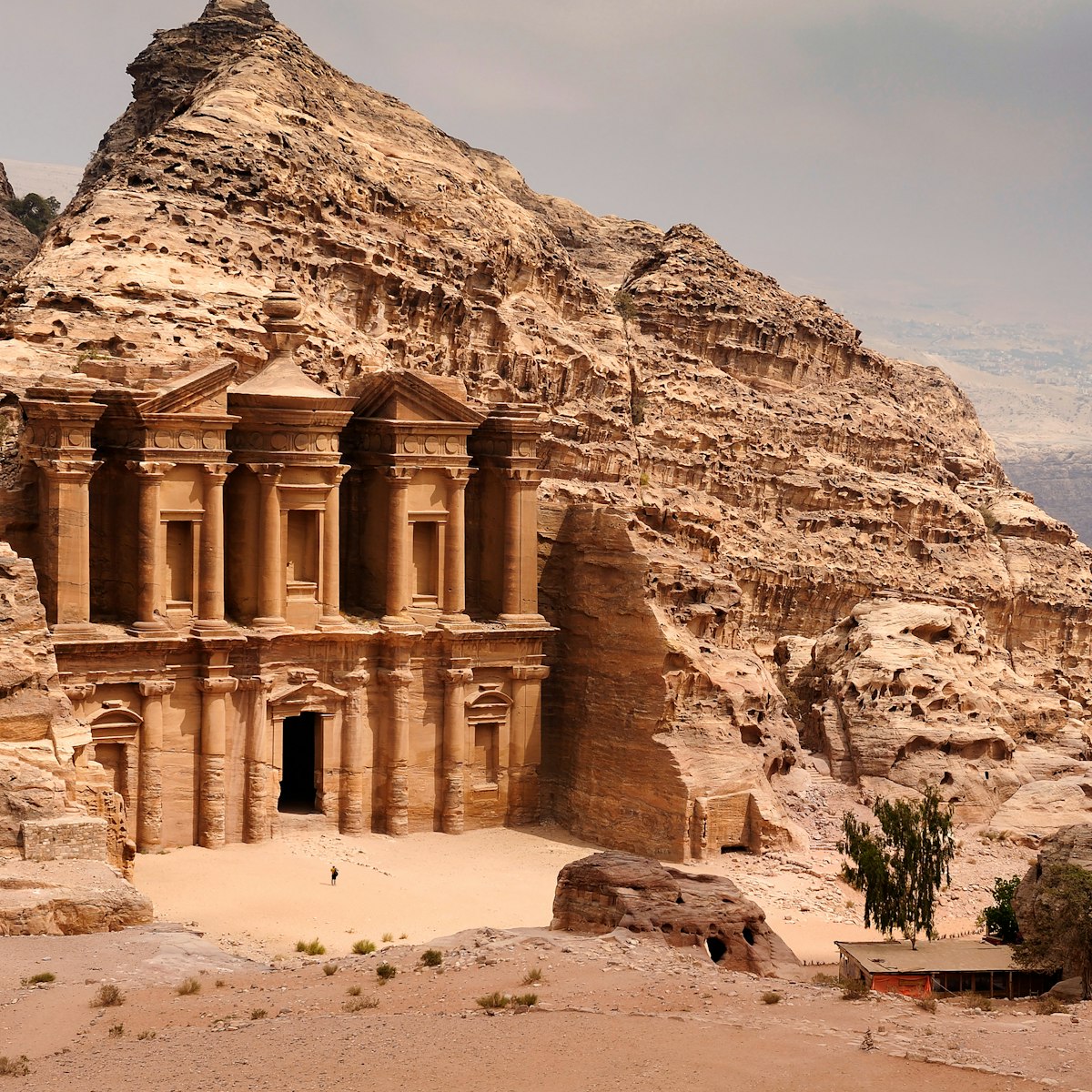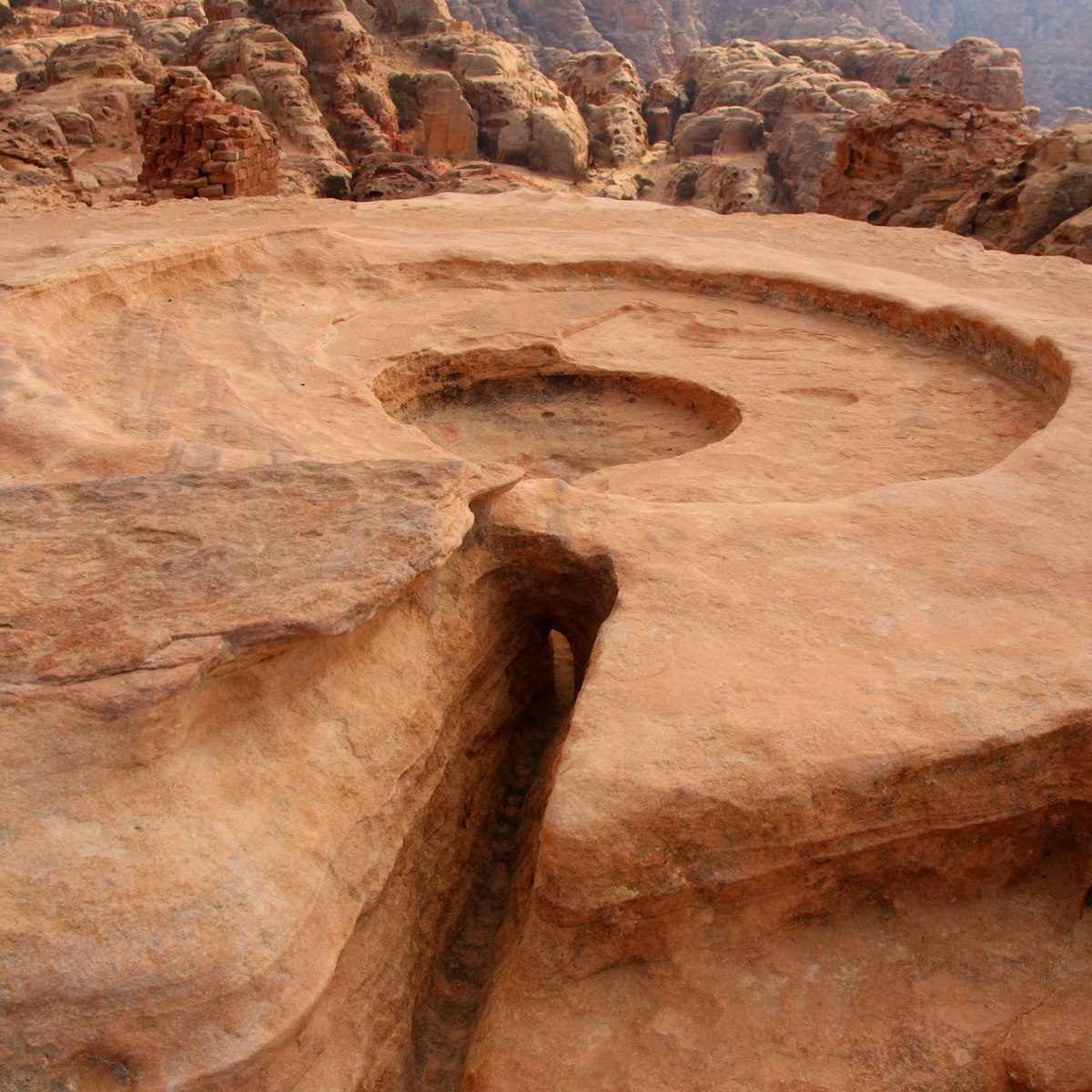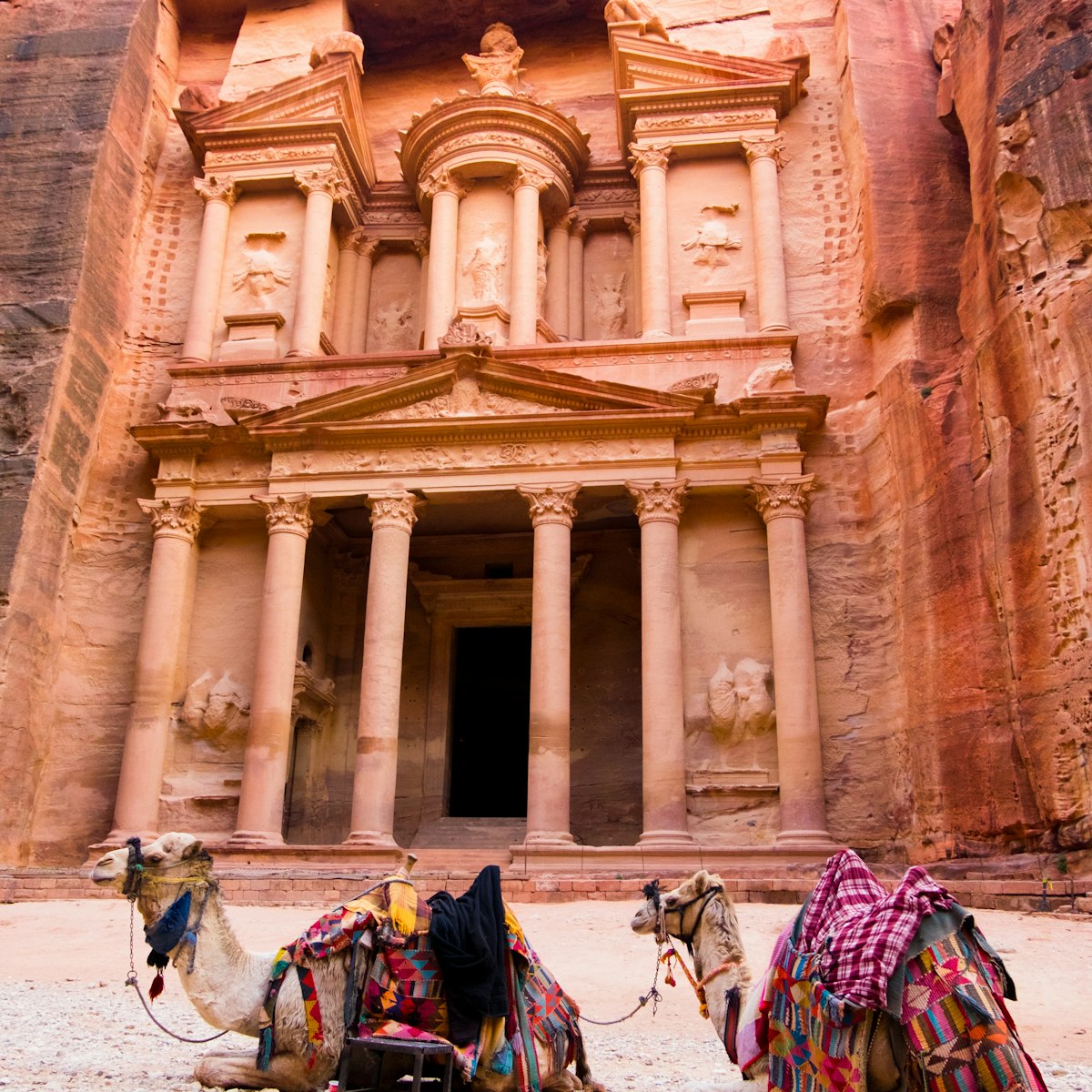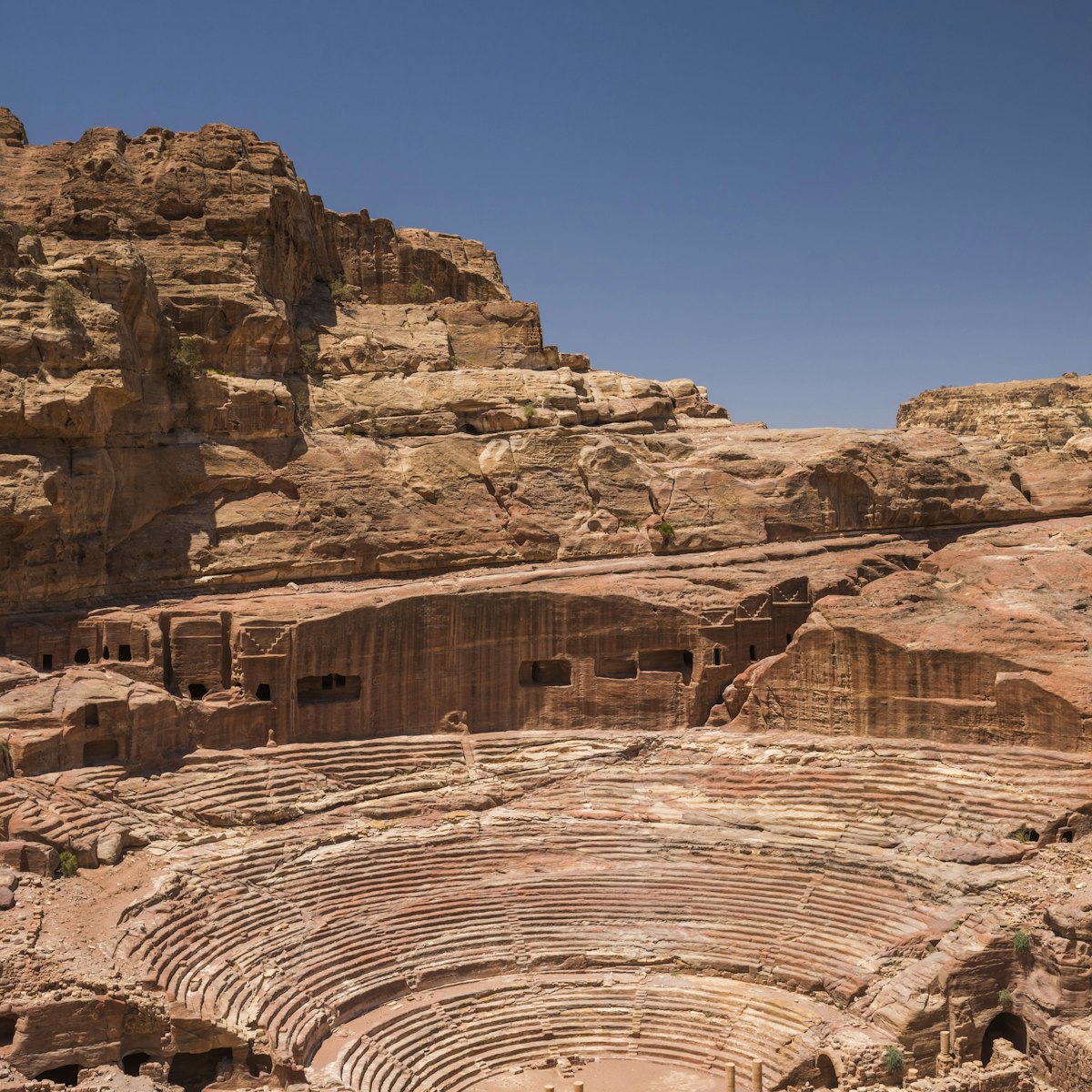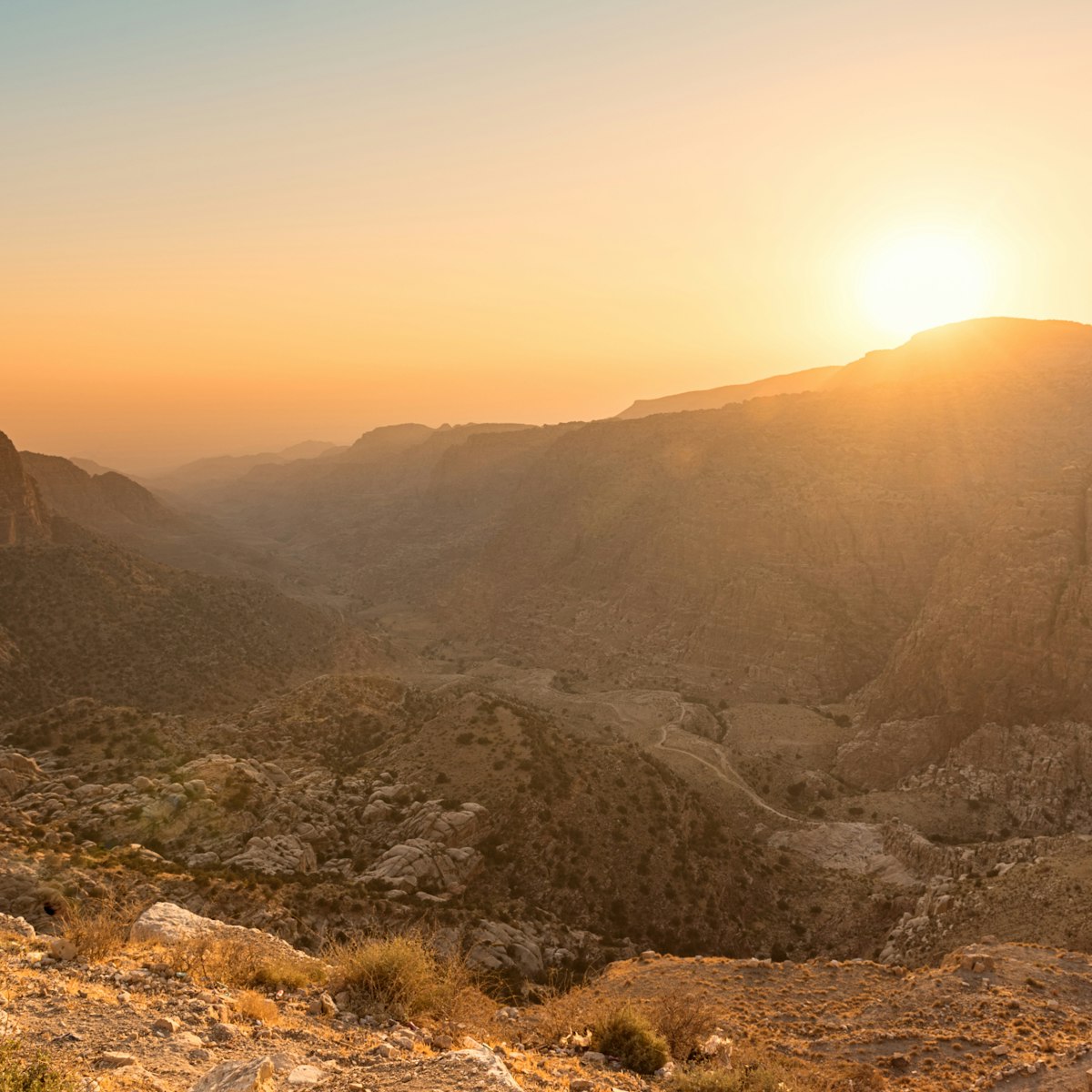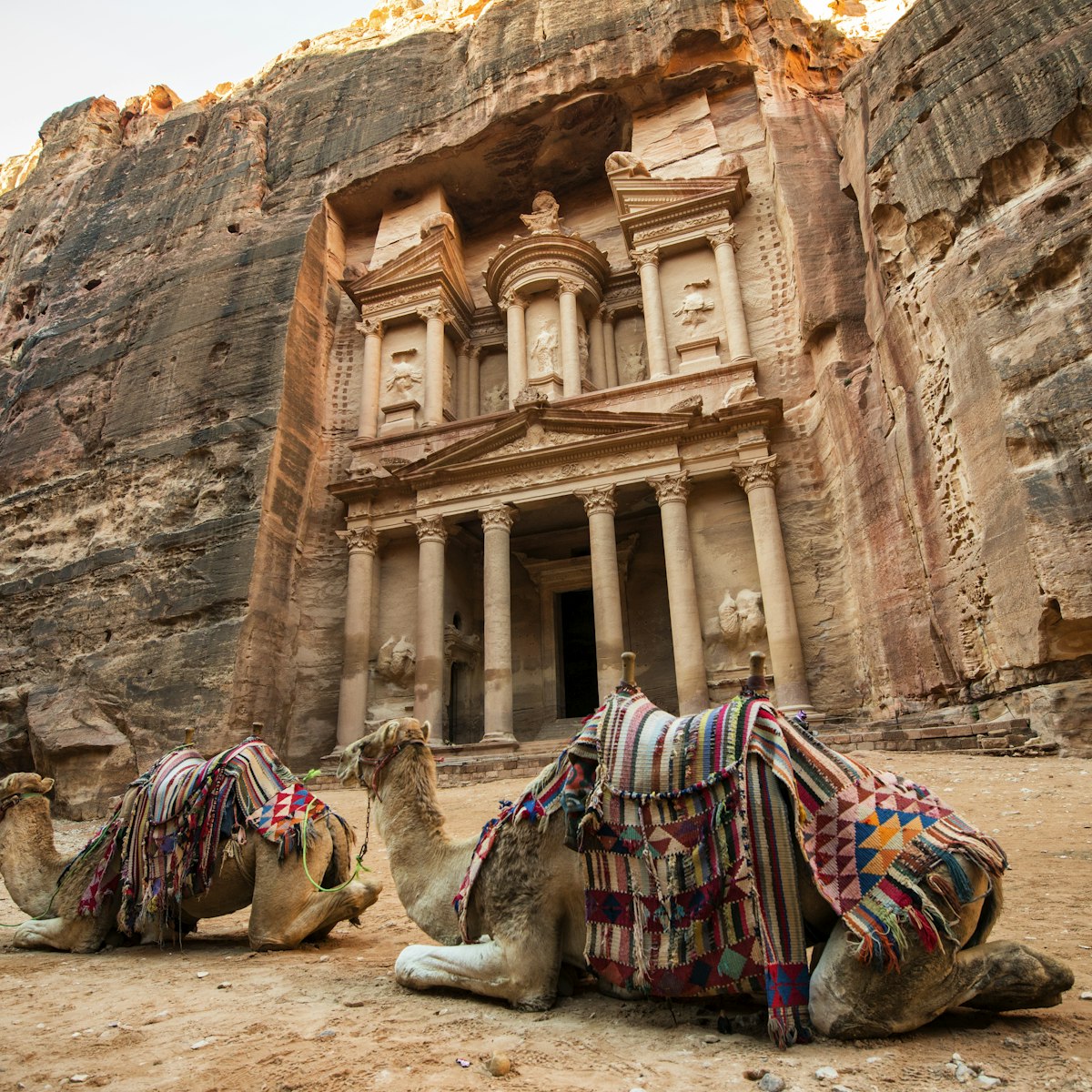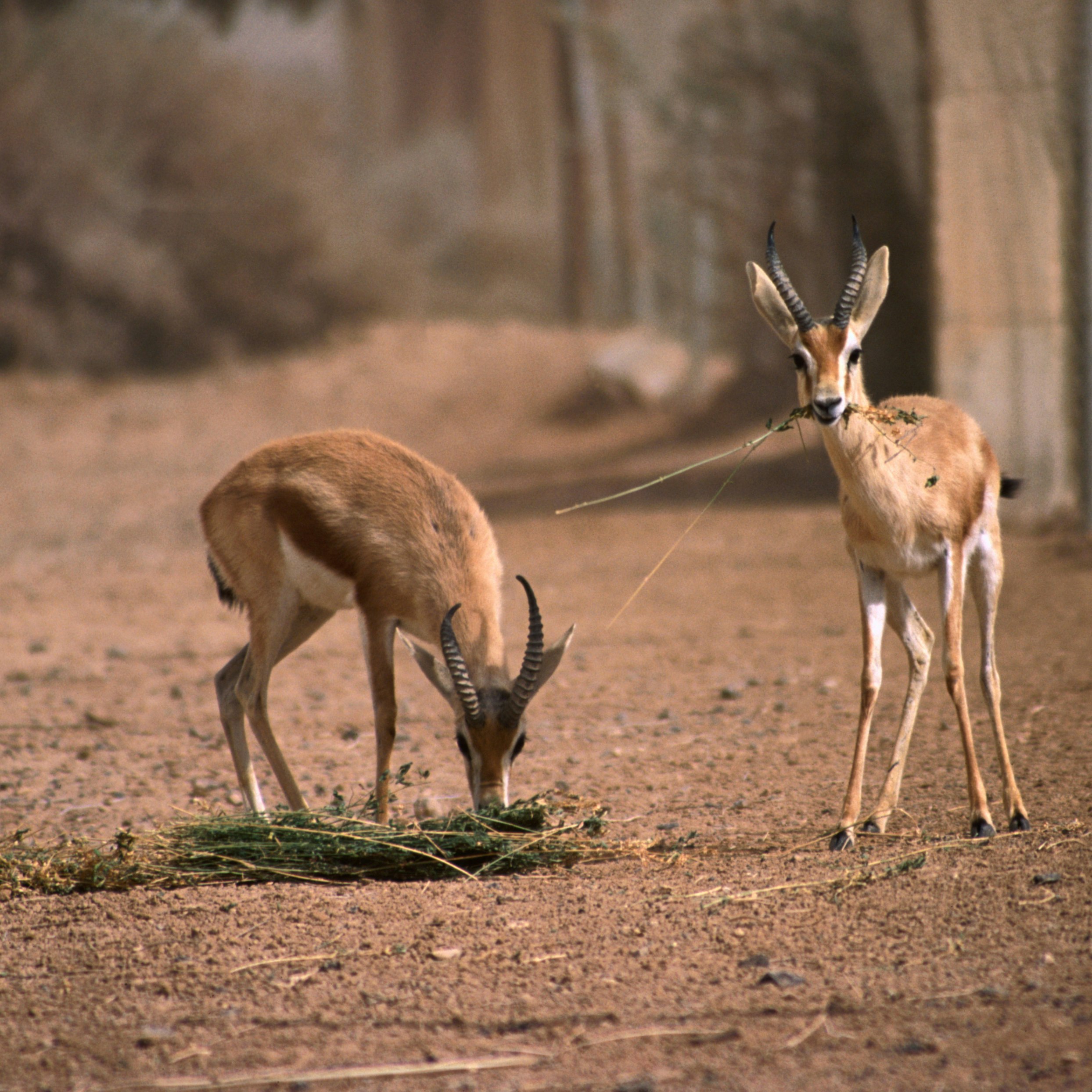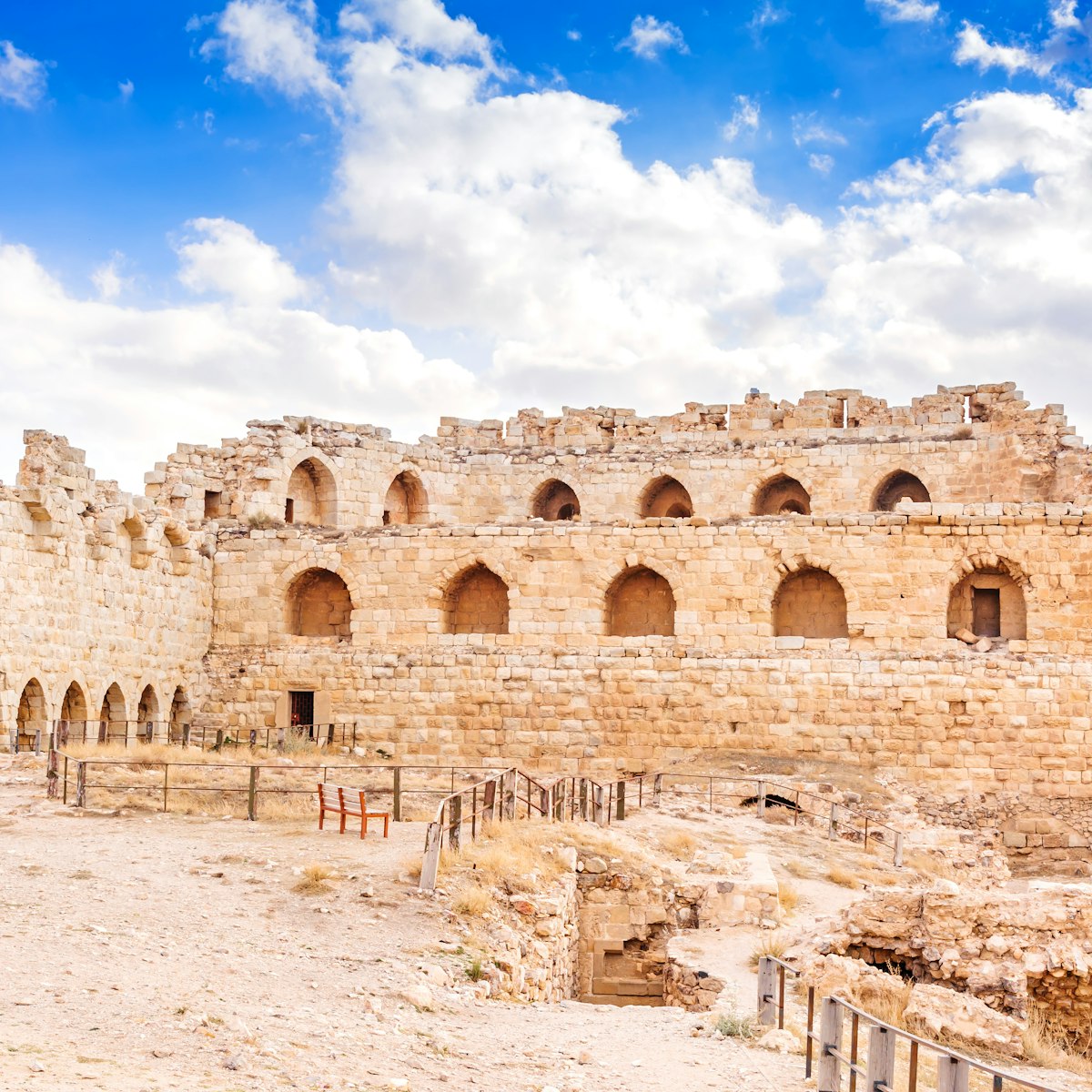
This fantastic Crusader stronghold, and later Mamluk fortress, is the reason to visit Karak. Throughout the castle, boards give detailed descriptions of the history and function of particular structures. Reconstruction and excavation work is ongoing: bring a torch (flashlight) to explore the darker regions, and watch your head on low doorways. The ticket office – and guides, charging around JD10 for a tour – can be found near the entrance.
You enter the castle via the Ottoman Gate: on a windy day, high above the dry moat, it's a struggle and a relief to reach the gate's shelter.
The Crusader Gallery functioned as the castle stables. Near the far end of the gallery, steps lead down to the Crusader’s Gate. This would once have been the main castle entrance, but it is currently awaiting restoration and remains closed to the public. Those entering the castle here did so via a narrow, winding passage, separated from the Crusader Gallery by a wall. This restrictive access ensured that the entrance could be easily defended and is typical of Crusader castles.
On the north wall of the gallery is a (now headless) carved figure that local legend claims to be Saladin, but which actually dates from the 2nd century AD and is believed by scholars to be a Nabataean funerary carving. A small staircase leads up to the site of the ruined northeast tower, while a long passageway leads southwest to the barracks, notable for the small holes used for light, the walls of limestone and straw, and a few Byzantine rock inscriptions on the walls. Across the corridor is the kitchen, which contains large, round stones used for grinding olives, and huge storage areas for oil and wheat. In a dark tunnel (only visible with a torch) are some Greek inscriptions of unknown meaning. A door from the kitchen leads to a giant oven.
Beyond the parapet is the glacis, the dizzyingly steep rocky slope that prevented invaders from climbing up to the castle and prisoners from climbing down. This is where Renauld de Châtillon delighted in expelling his enemies.
The overgrown upper court has a large cistern and the mostly unexcavated domestic residences. At the northern end of the castle is the terrace, directly above the Crusader Gallery, with fine views. Above the far (southern) end of the castle rises Umm Al Thallaja (Mother of Snows), the hill that posed the greatest threat to the castle’s defences during a siege. To the west is the village of Al Shabiya, which was once called Al Ifranj because many Crusaders (Franks) settled here after the fall of the castle.
The castle's main Crusader church was built with a sacristy down the stairs to the right (north). Note how in this lowered room there are arrow slits in the walls, suggesting that this originally formed part of the castle's outer wall. The neighbouring tower is believed to have been a Mamluk mosque.
Two corridors lead from the church. The left (east) corridor leads past seven prison cells and the prison administration office. The right (west) corridor leads from the foot of the stairs through the Rosette Gallery, named after the carved rosette at the bottom of the staircase.
Also from the church, you can take a passage to the left of the steps that leads northwest through the bowels of the castle, roughly underneath the church. The corridor turns right (north) and emerges into the better-lit areas of a delightful underground marketplace with various shops and cellars.
At the southern end of the castle is the keep – the refuge of last resort. It was here that Karak's defences were strongest, with 6.5m-thick walls, arrow slits on all four levels and a crenellated section at the top. The keep was built from 1260 by Mamluk sultan Beybars.
From the keep, stairs lead down to the Mamluk Palace. Built for Sultan Al Nasir Muhammad in 1311, the palace has an open-air reception hall that is a variation of the classic Islamic design of four iwans (chambers) off the main hall; there are barrel-vaulted rooms on two sides. The mosque here, with a clearly visible mihrab (niche in mosque indicating direction of Mecca), was probably reserved for palace notables. Pause near the top of the stairs for good views of Wadi Karak and the site said to be that of the condemned cities of Sodom and Gomorrah.
Down the hill is the excellent Islamic Museum. In a semi-subterranean part of Karak Castle, with a vaulted ceiling, this evocatively lit collection houses some of the finds from the castle and excavations in the surrounding area.
 Publish for free
Publish for free

 zzdtravel
zzdtravel

